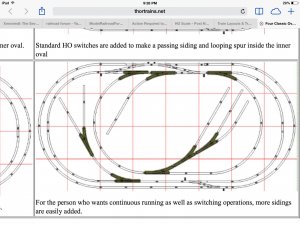Hey Everyone,
My kids love trains and it would be awesome if I could build something for them. I have some knowledge about trains but there is a lot of gaps. I know there is a certain way of building and if you don't get it right you're going to be redoing your work. I've tried searching the internet on how to build but I can't really find anything and I'm kind of overwhelm at this point.
I attached a pic of the layout I would like to build. If someone could help me out I would be very grateful. Couple initial questions I have are below. I like to start ordering parts and get this project rolling.
Questions i have:
What kind of transformer would I need to run this layout? Does running two trains require a different transformer?
Are the curve pieces all the same? Or are there different radii?
What are the y-shaped pieces? Are the y-shaped pieces highlighted in color different from the ones they are left white?
Are the pieces 9"?
What's the most wallet friendly track out there?
Thanks for your help!
Dave
My kids love trains and it would be awesome if I could build something for them. I have some knowledge about trains but there is a lot of gaps. I know there is a certain way of building and if you don't get it right you're going to be redoing your work. I've tried searching the internet on how to build but I can't really find anything and I'm kind of overwhelm at this point.
I attached a pic of the layout I would like to build. If someone could help me out I would be very grateful. Couple initial questions I have are below. I like to start ordering parts and get this project rolling.
Questions i have:
What kind of transformer would I need to run this layout? Does running two trains require a different transformer?
Are the curve pieces all the same? Or are there different radii?
What are the y-shaped pieces? Are the y-shaped pieces highlighted in color different from the ones they are left white?
Are the pieces 9"?
What's the most wallet friendly track out there?
Thanks for your help!
Dave



